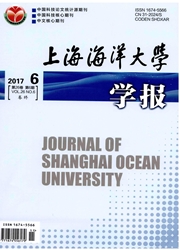

 中文摘要:
中文摘要:
提取枸杞岛海藻场沉积物样品总DNA,以细菌16S rDNA通用引物进行PCR扩增,经分子克隆、测序与序列分析,构建了沉积物细菌16S rDNA文库和系统发育树,进行沉积物中细菌多样性及系统发育分析。结果表明,沉积物中细菌分属5个类群,分别为变形细菌门(Proteobacteria,48.2%)、厚壁菌门(Firmicutes,22.2%)、放线菌门(Actinobacteria,14.8%)、绿屈挠菌门(Chloroflexi,3.7%)和酸杆菌门(Acidobacteria,3.7%),还有一些尚未确定其分类(7.4%)。在枸杞岛海藻场沉积物变形细菌门类群中,γ-变形菌占主导地位,约为46.1%,其次为α-变形菌(23.1%)、β-变形菌(15.4%)、ε-变形菌(7.7%)和δ-变形菌(7.7%)。作为海洋沉积物中的优势菌群,不同生态系统中变形细菌门类群的组成略有不同,功能类群的组成与生态系统机制密切相关。厚壁菌门和放线菌门作为革兰氏阳性菌的两个分支,在枸杞岛海藻场中主要参与分解碎屑及异养营养素的循环过程。
 英文摘要:
英文摘要:
The clone library of 16S rDNA and the phylogenetic tree were constructed with extraction of bacterial DNA from seaweed bed sediment sample of Gouqi Island,PCR amplification of bacterial 16S rDNA by universal primers,molecular clone,sequencing of 16S rDNA fragments and sequence analysis.The biodiversity of bacteria and phylogenetic analysis showed that the bacterial community fell into five main lineages: Proteobacteria(48.2%),Firmicutes(22.2%),Actinobacteria(14.8%),Chloroflexi(3.7%),Acidobacteria(3.7%),In addition,a part of unidentified bacteria(7.4%) was detected.Gammaproteobacteria played the dominant role in the Proteobacteria community of the seaweed bed sediment,it was about 46.1%,followed by the Alphaproteobacteria(23.1%),Betaproteobacteria(15.4%),Epsilonproteobacteria(7.7%),Deltaproteobacteria(7.7%).As the preponderant bacteria of marine sediment,the composition of Proteobacteria community was different in dissimilar ecosystems.It explained that the composition of the functional group is closely related to the mechanism of ecosystem.As the two branches of Gram-positive bacteria,Firmicutes and Actinobacteria mostly participated in decomposition of detritus and heterotrophic nutrient cycle in the seaweed beds of Gouqi Island.
 同期刊论文项目
同期刊论文项目
 同项目期刊论文
同项目期刊论文
 期刊信息
期刊信息
